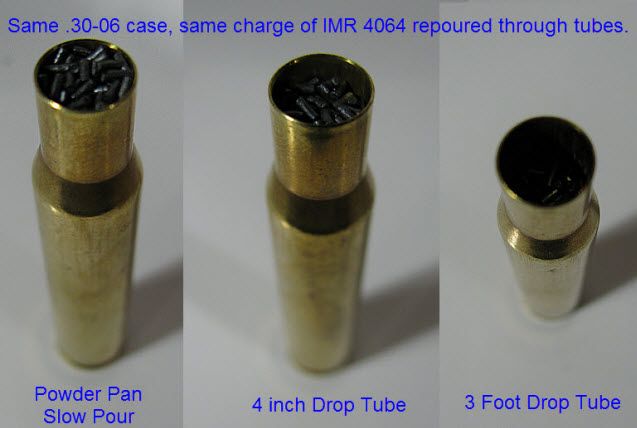Pond James Pond
New member
.... through a source other than VihtaVuori?
And how full is a full-case load?
I'm prepping a test ladder for my AR. I've already prepped a set of charge weights with N135 and tonight a dropped a set with N140.
My bullet of choice here is a 62gr PRVI FMJBT and I'm hoping it will gel with my rifles 1:7 twist more than the 55gr factory loads I've been shooting.
Loading the N135 was uneventful, but the with N140 VihtaVuori data stated a full-case max load at 26.2gr (for a Speer 62gr FMJBT), so I used this as a my max load to calculate the lower charges from.
However!..... even my charges at about 25.4gr were into the neck of the case and I can'r see how I'll be able to seat a bullet like that boat-tail and not compress the powder.
I poured one dose of 26.2gr and it filled the case to the brim!! So far I have stopped prepping cases beyond the 25.9gr load and even that I think may need to be pulled for the same reason.
So I'd like two things from folks if they can help.
Firstly, does a full-case load mean to the brim and so inevitably a compressed load of powder (I had assumed not, but rather that once the bullet was seated you'd just have not rattle-room).
Secondly, can anyone confirm that a 62gr FMJBT in .223 Rem will hit the max charge around 26gr? However, this must be from a source other than VihtaVuori.
Thanks in advance!
And how full is a full-case load?
I'm prepping a test ladder for my AR. I've already prepped a set of charge weights with N135 and tonight a dropped a set with N140.
My bullet of choice here is a 62gr PRVI FMJBT and I'm hoping it will gel with my rifles 1:7 twist more than the 55gr factory loads I've been shooting.
Loading the N135 was uneventful, but the with N140 VihtaVuori data stated a full-case max load at 26.2gr (for a Speer 62gr FMJBT), so I used this as a my max load to calculate the lower charges from.
However!..... even my charges at about 25.4gr were into the neck of the case and I can'r see how I'll be able to seat a bullet like that boat-tail and not compress the powder.
I poured one dose of 26.2gr and it filled the case to the brim!! So far I have stopped prepping cases beyond the 25.9gr load and even that I think may need to be pulled for the same reason.
So I'd like two things from folks if they can help.
Firstly, does a full-case load mean to the brim and so inevitably a compressed load of powder (I had assumed not, but rather that once the bullet was seated you'd just have not rattle-room).
Secondly, can anyone confirm that a 62gr FMJBT in .223 Rem will hit the max charge around 26gr? However, this must be from a source other than VihtaVuori.
Thanks in advance!

